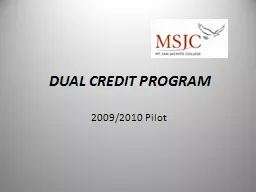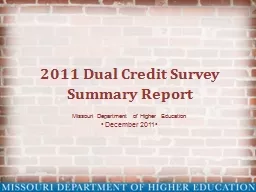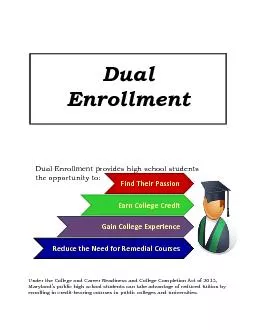PPT-Win-Win Partnerships: Dual Credit Providers and Secondary Institutions Aligning with
Author : min-jolicoeur | Published Date : 2018-10-20
Kathleen Burns PhD UMSL Lynne ClawsonDay UMKC Mary Ellen Fuquay MBU Gayle Rogan PhD SLU Outline of Presentation Description of NACEP StandardsArtifacts Short
Presentation Embed Code
Download Presentation
Download Presentation The PPT/PDF document "Win-Win Partnerships: Dual Credit Provi..." is the property of its rightful owner. Permission is granted to download and print the materials on this website for personal, non-commercial use only, and to display it on your personal computer provided you do not modify the materials and that you retain all copyright notices contained in the materials. By downloading content from our website, you accept the terms of this agreement.
Win-Win Partnerships: Dual Credit Providers and Secondary Institutions Aligning with: Transcript
Download Rules Of Document
"Win-Win Partnerships: Dual Credit Providers and Secondary Institutions Aligning with"The content belongs to its owner. You may download and print it for personal use, without modification, and keep all copyright notices. By downloading, you agree to these terms.
Related Documents














